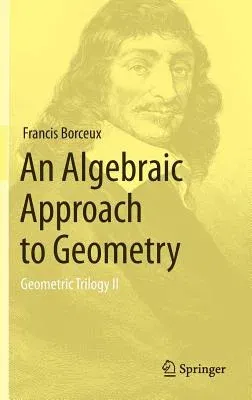This is a unified treatment of the various algebraic approaches to
geometric spaces. The study of algebraic curves in the complex
projective plane is the natural link between linear geometry at an
undergraduate level and algebraic geometry at a graduate level, and it
is also an important topic in geometric applications, such as
cryptography.
380 years ago, the work of Fermat and Descartes led us to study
geometric problems using coordinates and equations. Today, this is the
most popular way of handling geometrical problems. Linear algebra
provides an efficient tool for studying all the first degree (lines,
planes) and second degree (ellipses, hyperboloids) geometric figures, in
the affine, the Euclidean, the Hermitian and the projective contexts.
But recent applications of mathematics, like cryptography, need these
notions not only in real or complex cases, but also in more general
settings, like in spaces constructed on finite fields. And of course,
why not also turn our attention to geometric figures of higher degrees?
Besides all the linear aspects of geometry in their most general
setting, this book also describes useful algebraic tools for studying
curves of arbitrary degree and investigates results as advanced as the
Bezout theorem, the Cramer paradox, topological group of a cubic,
rational curves etc.
Hence the book is of interest for all those who have to teach or study
linear geometry: affine, Euclidean, Hermitian, projective; it is also of
great interest to those who do not want to restrict themselves to the
undergraduate level of geometric figures of degree one or two.

